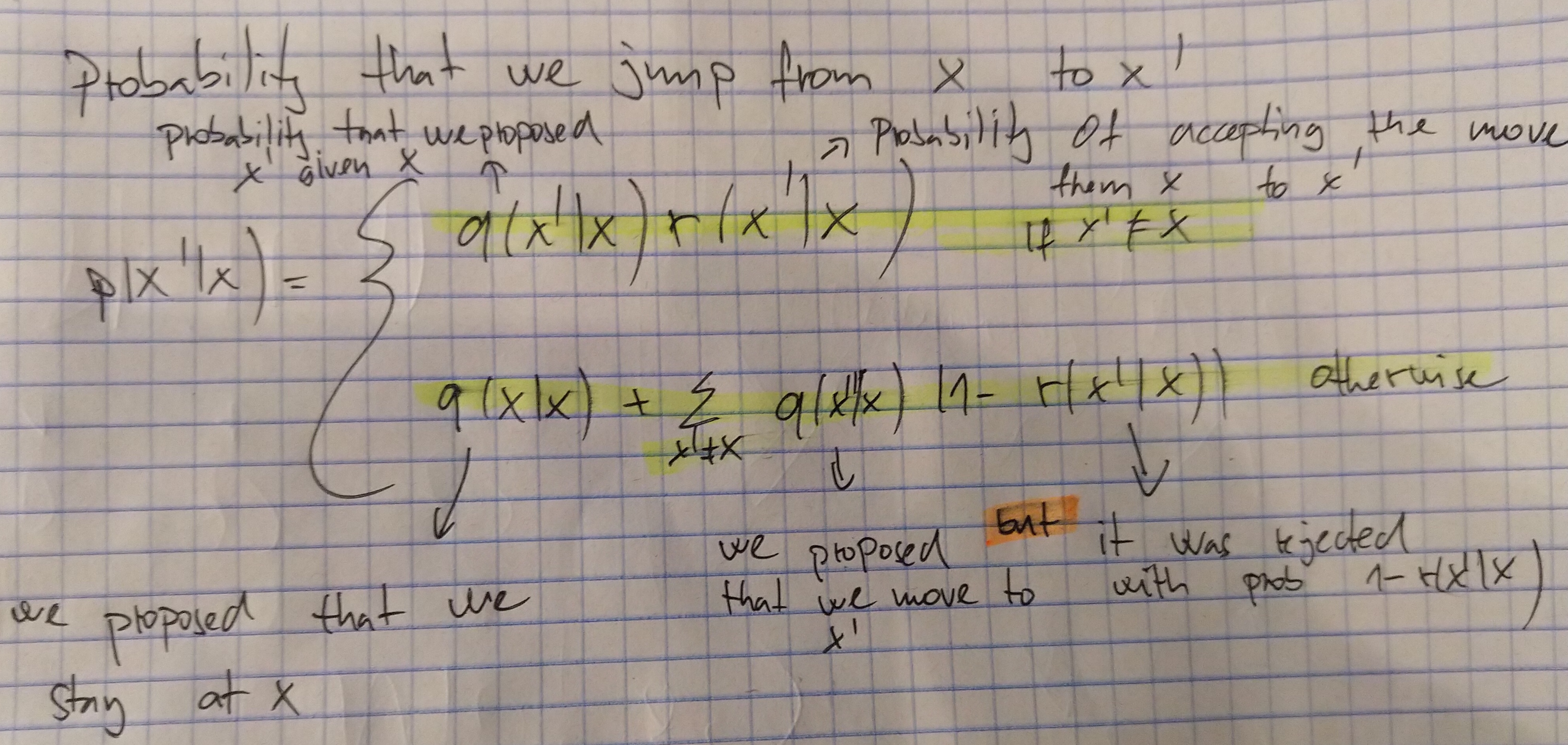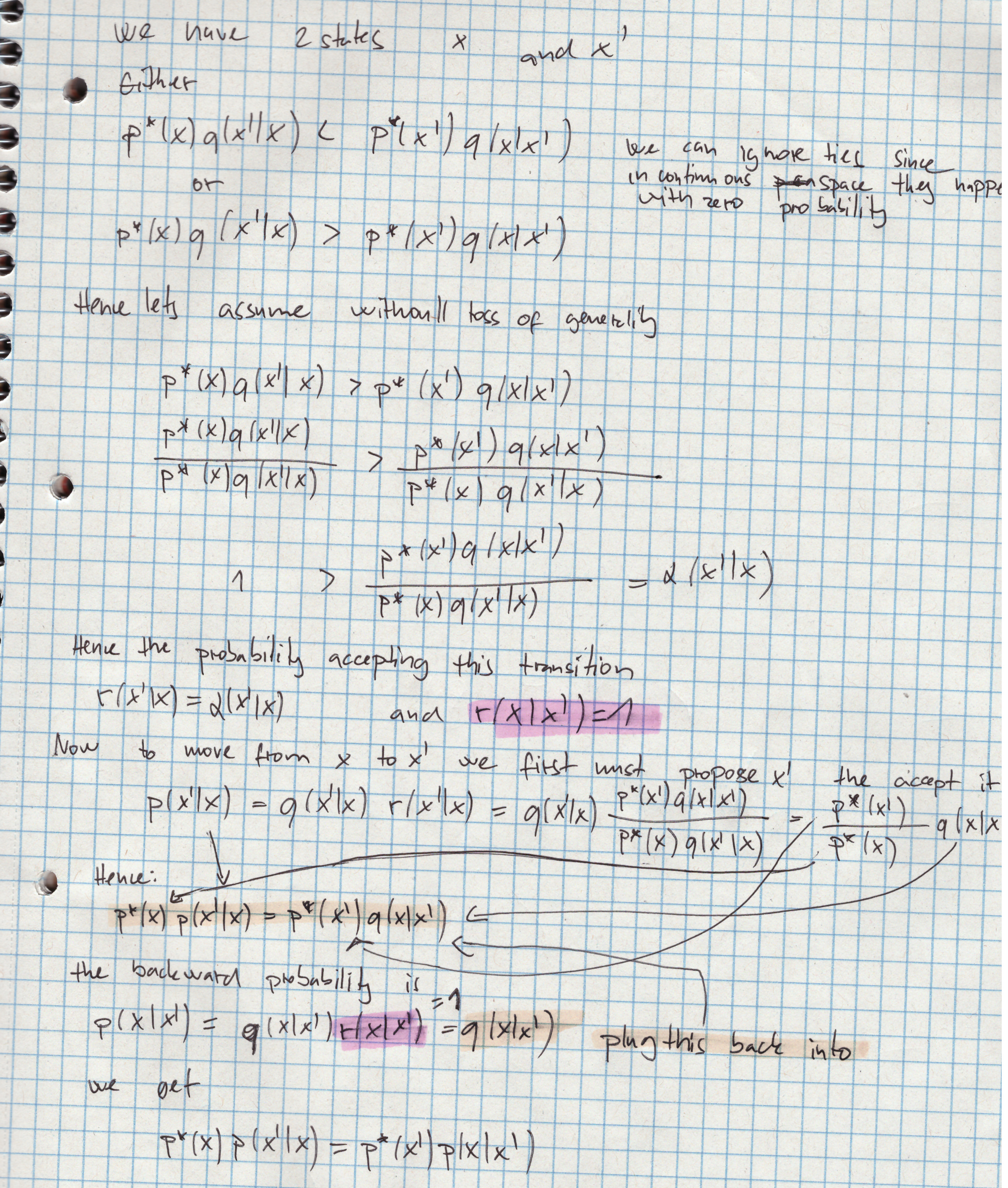Why HM works¶
To prove that HM procedure generates samples from \(p^*\), we have to use a bit of Markov chain theory.
The HM algorithm defines a Markov chain with the following transition matrix:

If we analyze this Markov chain, it has to satisfy the detailed balance equation
Now if the chain statisfies the detail balanced equation, then \(p^*\) is its stationary distribution. Our goals is to show that HM algorithm defines a transition function that satifies detailed balance, thus \(p^*\) is its stationary distribution. (If this equation hold we can say that \(p^*\) is an invariant distribtuion with respect the Markov transition kernel q).
Theroem
If the transition matrix defined by HM algorithm is ergodic and irreducible, then \(p^*\) is its unique limiting distribution

